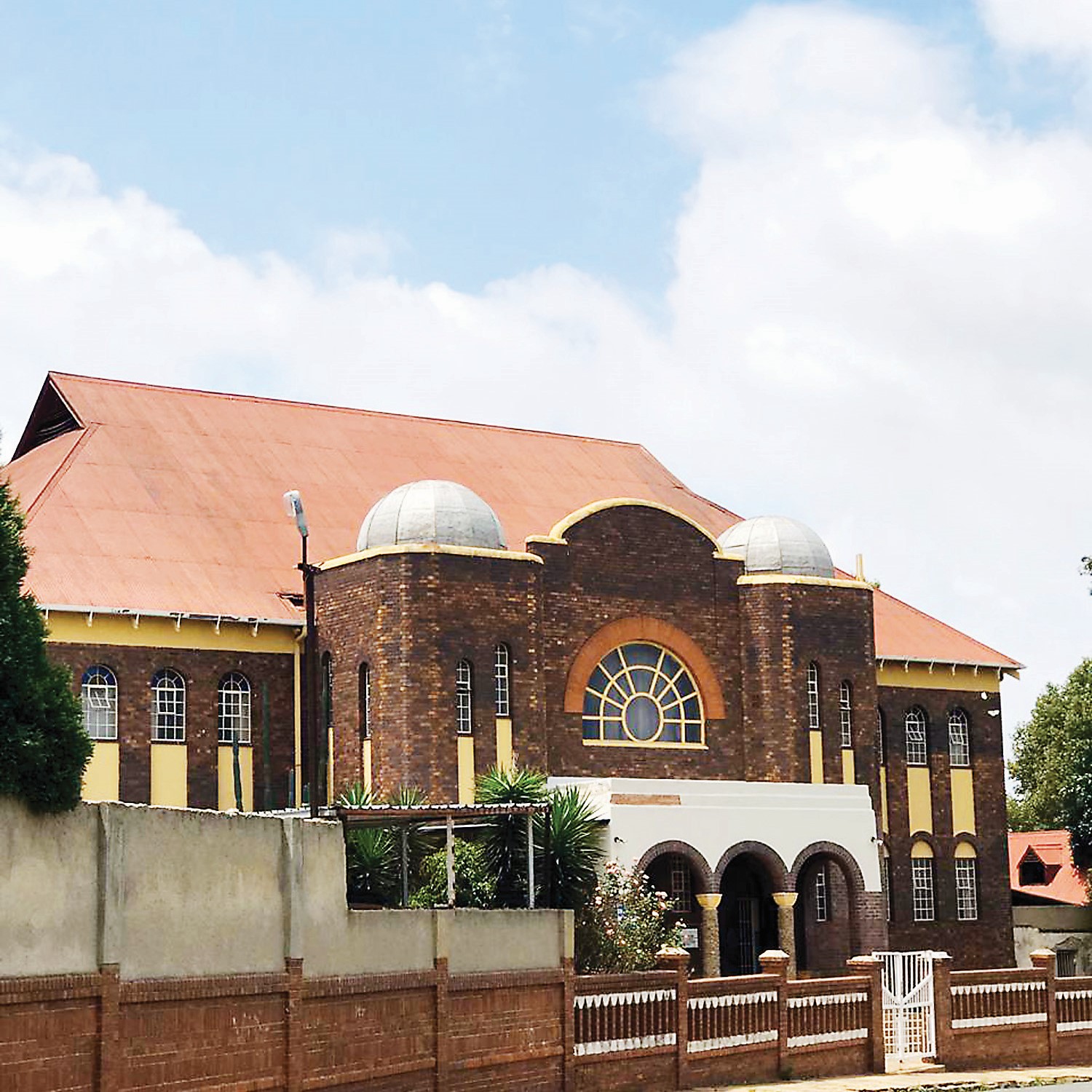click to dowload our latest edition
CLICK HERE TO SUBSCRIBE TO OUR NEWSLETTER


Published
4 years agoon
By
adminSTEVEN GRUZD
I took a walking tour recently led by the irrepressible Ishvara Dhyan through the colourful history of Johannesburg’s newest and oldest suburbs.
Due to “crime and grime”, the Johannesburg central business district (CBD) suffered “white flight” and steadily decayed from the 1990s. Derelict buildings were eventually abandoned and occupied by migrants, with intolerable living conditions.
However, in 2008, young developer Jonathan Liebmann saw potential for the CBD to reinvent itself. He followed in the footsteps of countless Jewish property moguls who have helped repurpose and revive the inner city. Liebmann’s Propertuity company bought up many bargain-basement-priced buildings. These he renovated into avant-garde, arty stores, watering holes and eateries, galleries, cinemas, and hotels.
“But Maboneng got too big too soon”, said Dhyan. In 2019, many of its buildings were auctioned off as Liebmann ran into financial trouble.
Dhyan believes that Maboneng is now more genuinely rooted, with its hair salons, African art stores, and bars. It’s catering for the surrounding community rather than just tourists and hipster fun-seekers.
In Maboneng’s spirit of turning darkness into light, Jewish artist Kim Lieberman has transformed a polluted sewer into a striking, soulful, three-dimensional artwork. There are rust-covered giant silhouette sculptures of many of Maboneng’s founders and local artists, including William Kentridge and Lieberman herself. The figures are joined together by wires and webs, characteristic of Lieberman’s fascination and experimentation with lacework.
Moving back in time to the 19th century from the 21st, we walked through the busy streets of Jeppestown, amid car carcasses and spaza shops with large burglar bars and live caged chickens.
While there is no definitive proof that the suburb’s founder, Sir Julius Jeppe, had Jewish roots, it’s entirely possible that he came from an assimilated German-Jewish family.
“Jeppe was so influential in the early days,” said Dhyan, “they should have named the city ‘Jeppesburg’. He contributed more to the development of Joburg than any other human being.” Schools, roads, and suburbs today bear his name.
In a side street, the Jewish influence is unmistakeable. The filigree or “broekie lace” decorations on second floor balconies incorporate Stars of David. This indicates that the shops below would probably have had Jewish owners. On the corner is the CH Jankelow building from the 1960s.
A nearby community centre celebrates the selflessness of Bertha Solomon, who opened soup kitchens for the poor in the 1930s, for Jews and non-Jews (mostly white people in those days).
Not far away stands the oddly-shaped Stonehenge masonry and marble factory. It looks like a slice of cake has been cut from its front. This building housed Johannesburg’s first Lithuanian shul from 1903, catering for the recent Jewish immigrants (the devout “Litvaks”) who joined British and German Jews (known as “Yekkes”) in the city. But by 1926 it was in the path of a new railway line – hence the sliced-off look – and so Jeppe built a new shul a few hundred metres away.
Combining Byzantine-style domes and buttresses, classical columns, and a typical Lithuanian pitched roof, the Jeppestown Synagogue, opened on Purim in 1926. It still stands. The well-known business and philanthropist Lubner family was among its congregants – a small plaque indicating the seat of “Mrs B. Lubner” is still visible in the women’s section upstairs. It was sold by former Johannesburg Mayor David Neppe (almost half of the city’s mayors were Jewish) for a paltry R200 000 in 2002. Neppe died mysteriously in a hotel in Bruma a week later.
Like the Great Synagogue in Wolmarans Street, it was bought to become a church. The Jeppestown Shul was bought by the Assembly of G-d Pentecostal Church Ministry of Ebenezer in South Africa, made up mainly of Portuguese-speaking Angolan and Mozambican immigrants.
We entered the shul through the Ebenezer Sponge Car Wash. A stained-glass Magen David window is set slightly askew. “Urban legend has it that it was installed by someone still drunk from Purim,” said Dhyan. The original pews rot in the parking lot, having been replaced downstairs by plastic chairs.
The oldest bimah in Johannesburg now stands in the church’s sound booth. According to research on Jewish Johannesburg by Rose Norwich, it was imported from Kassel, Germany, in 1888. It first stood in the President Street Shul, which was disbanded because of conflict between the Litvaks and the Yekkes. The bimah then moved from the first to the second Jeppestown Shul. Imagine how many Jews – famous and forgotten – have stood on this bimah.
“And now no-one wants it,” lamented Dhyan.
As we left the shul, the new owners had displayed a large wooden board on the ground, inscribed with the gilded names of the shul’s donors, in pounds, shillings, and pence.
“We should have a Jewish museum in Johannesburg to preserve this heritage,” said Dhyan. “History has been severely neglected in Johannesburg. Jews were so invested in this city, and we have done nothing to honour and remember them. Cape Town’s Jews don’t have half the Yiddishkeit (Jewish way of life). Jews contributed less overall to the development of Cape Town, but we have no museum. It’s not for lack of money, I don’t think. The Lions Shul in Doornfontein is a good example that we can do it.”
